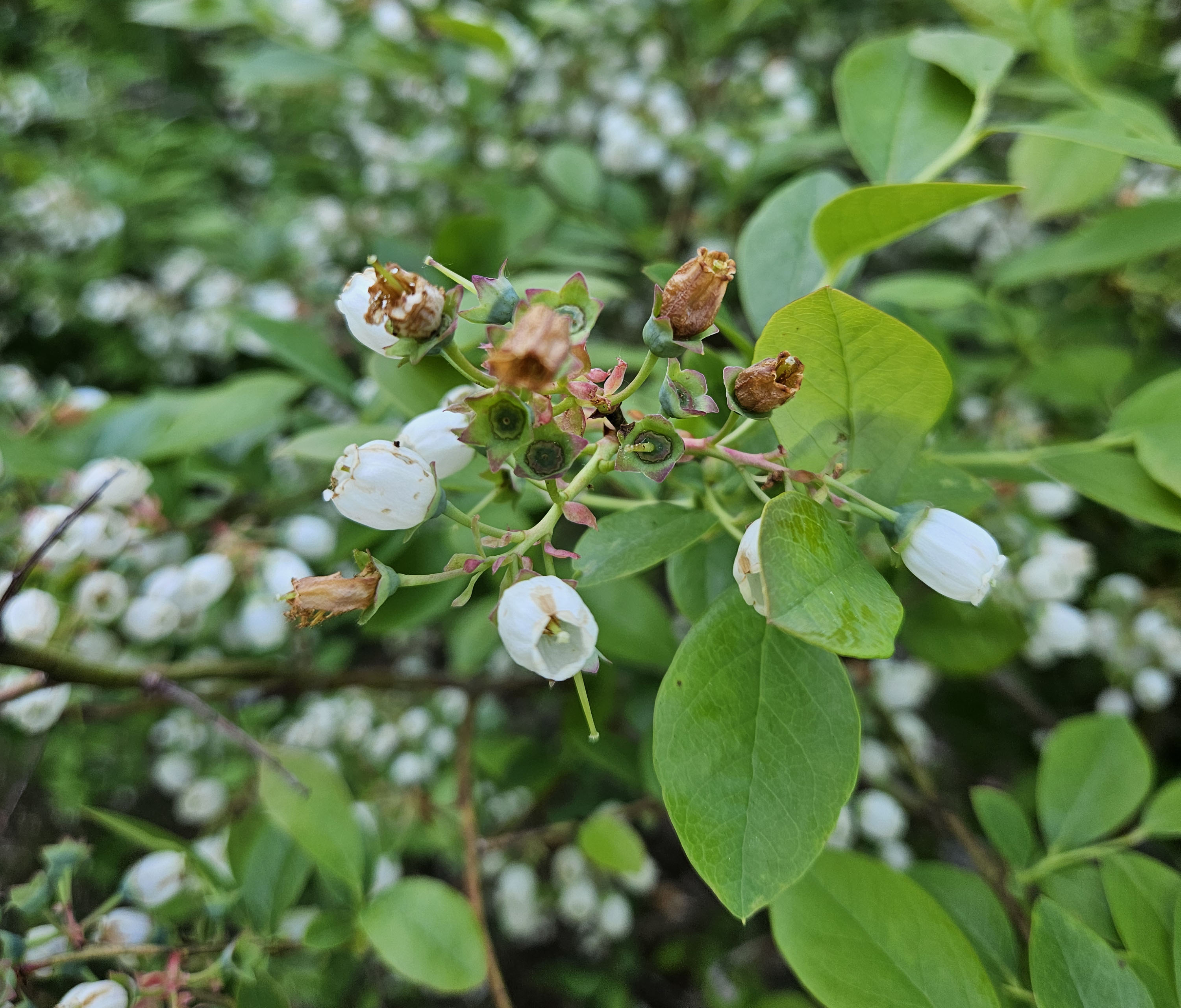West central Michigan small fruit update – May 22, 2024
Blueberries and strawberries are in the green fruit stage. Fruitworms and flower thrips are major pest problems.

This is becoming an exceptional year for fruit crop production. Climate change is advancing plant and insect pest phenology for more than 15 days ahead of their normal annual cycle.
As of May 22, 2024, degree-days accumulated (base 50 degrees Fahrenheit) since March 1 in Ottawa County, Allegan County and the Grand Junction area are 430, 428 and 495, respectively.
Hot weather and mild winter temperatures are impacting the population dynamics of most blueberry insect pests, including cherry fruitworm and cranberry fruitworm. However, the unexpected presence of flower thrips in blueberries due to climate change is the most damaging pest problem currently affecting mid- and late-season blueberry varieties. Furthermore, the same climatic conditions caused an unexpected surge in the presence of flower thrips in strawberries.
For these two small fruit crops, thrips could be a severe problem if left uncontrolled. In blueberries, it may result in a heavy fruit June drop of unpollinated fruitlets. In strawberries, thrips could cause bronzing on thimble-size green fruits (Photo 1).
Integrated pest management scouting in blueberry fields in Allegan County and Grand Junction indicated heavy presence of flower thrips in all the sites sampled. Already affected fields or varieties will suffer heavy June drop of unpollinated fruits caused by thrips feeding (Photo 2).

If you need to spray an insecticide to prevent thrip damage while bees still are present, Sivanto is labeled bee safe but we must still keep bees covered during the insecticide application. Other options are Assail 30 SG, Delegate 25 WG or Entrust 2 SC. Check the Michigan Fruit Management Guide (Michigan State University Extension Bulletin E-154) for the appropriate rates and recommendation. Cover the bees if they are present and avoid a tank-mix with any fungicides since the mix could have synergic effect on the insecticide, making it more toxic to bees. For all these options, check the label before spraying.
For strawberries, currently in west central Michigan the fruit is at the thimble-size green fruit stage. Our integrated pest management scouting indicates the presence of a large population of flower thrips, similar to what we are seeing in blueberries. Apply insecticides to prevent bronzing caused by thrips feeding on green fruits. Recommended insecticides are Cormoran DC (12 oz), Assail 30 SG (4 - 6.9 oz), Entrust 2 SC (4 - 6 fl oz) and Radiant SC (6 - 10 oz). All these insecticides are harmful to bees if sprayed directly on them or they enter in contact with a fresh residue. You need to protect the bees if they are actively visiting flowers in the crop. For all these options, check the label before spraying.
Finally, we found cranberry fruitworm and cherry fruitworm in west Michigan from Ionia County to Van Buren County. Since all blueberry varieties are in petal fall or green fruit stage, you need to initiate fruitworm control. According to the Michigan State University Enviroweather cherry fruitworm phenology model, the biofix for timing the first application against fruitworms occurred between May 12 in Van Buren County and May 15 in Ottawa and Ionia counties. Thus, the first application against cherry fruitworm should be between May 23 and May 28 for Van Buren County, and between May 27 and May 28 for Ottawa and Ionia counties. Check the Michigan Fruit Management Guide for products and doses.



 Print
Print Email
Email
